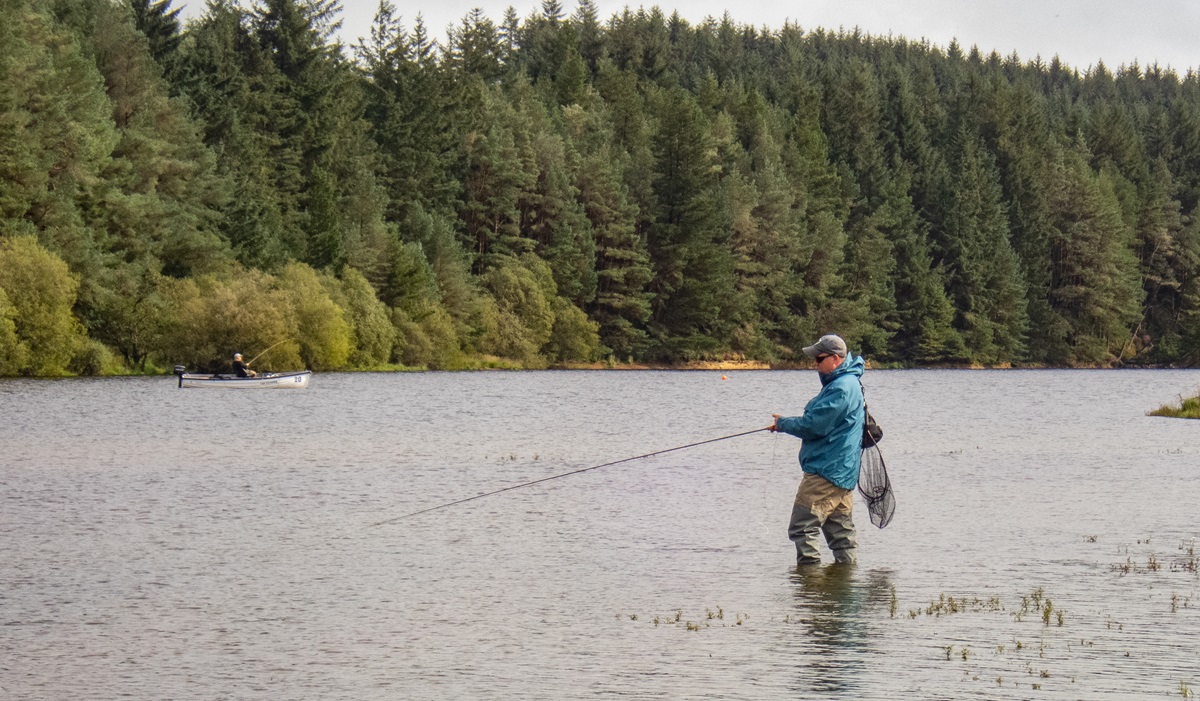Exploring the Coarse Fishing Season in Welsh Rivers
Whilst most Welsh rivers hold just game fish, we do have several excellent coarse fishing rivers that open on June 16th each year. This blog delves into the coarse fishing season in Wales, highlighting key locations, the best times to fish, and for which species, so you can make the most of coarse fishing in Welsh rivers.
The Coarse Fish River Season & Species
By law, the coarse fishing season in Welsh rivers opens on June 16th and closes on March 14th. The close period from 14th March to June 15th ensures the protection of fish during their spawning season.
Fish classified as coarse fish, that are governed by the close season in flowing waters include grayling, chub, pike, perch, roach, rudd, tench, bream, barbel, dace and carp. All of these fish spawn in the spring.
Note: trout and salmon are game fish, which spawn in the late autumn. So their season is different, typically running from March to October.
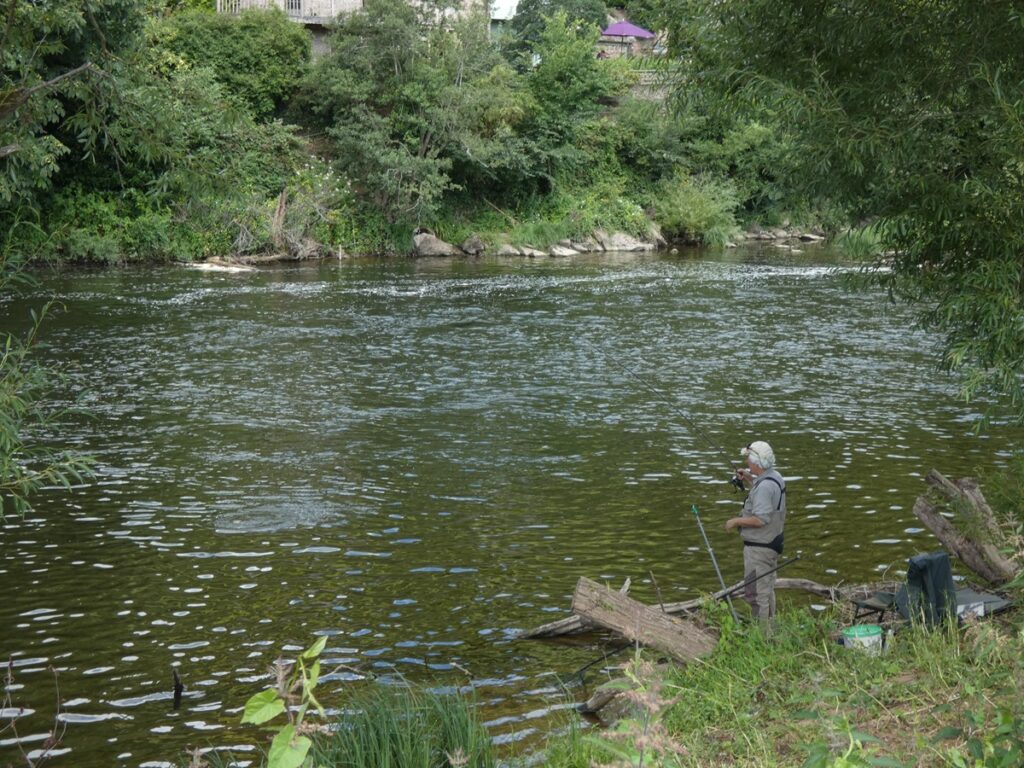
Welsh rivers with coarse fish
River Wye: Perhaps the most famous river in Wales for angling, the Wye has significant coarse fishing opportunities. After rising in the Cambrian mountains the Wye, for the most part, flows through Wales, with its lower course frequently making up the border with England. The Wye is probably the best mixed coarse fishing river in the UK. In it you will find barbel, chub, dace, bleak, grayling, pike, perch, roach, rudd and the odd river carp, all of which can grow large.

The best coarse fishing opportunities on the river Wye start at Builth Wells, but grayling and the odd chub and pike can be found as high up as Rhayader. The lower reaches around Monmouth are particularly well known for excellent summer barbel and chub fishing, and for specimen pike in the winter.
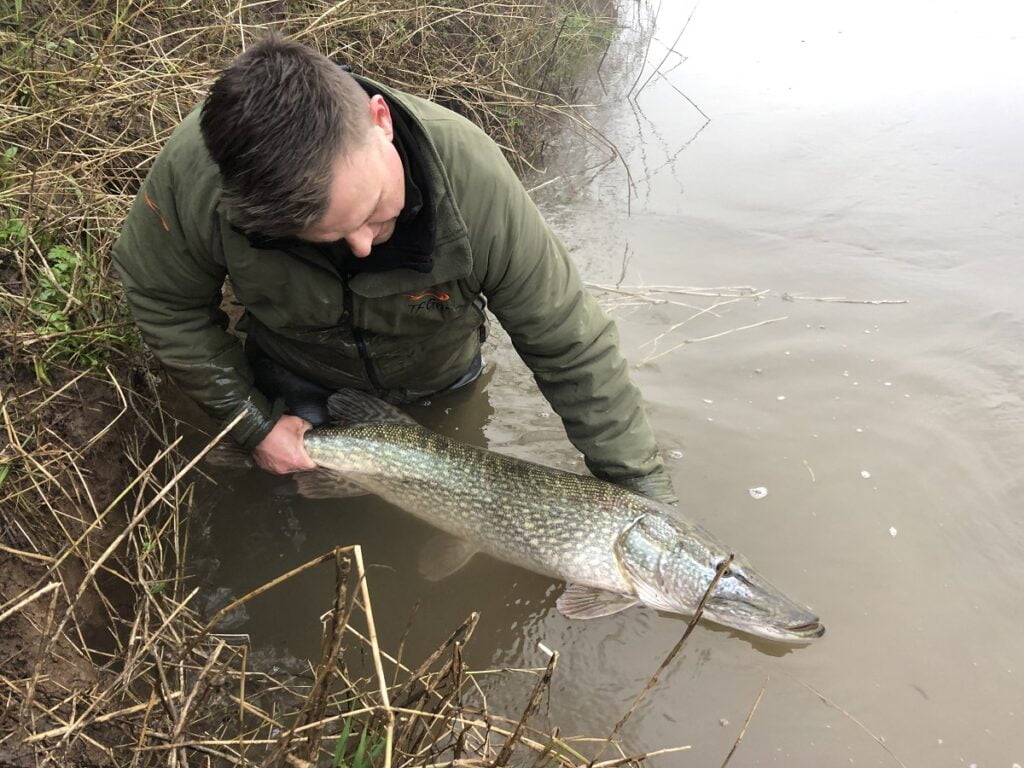
Many day ticket options are available on the Wye, mostly through day ticket through vendors such as The Fishing Passport, Angling Dreams, or though a number of club and association waters, for example Newport Angling Association, Monmouth and District, Glamorgan AC and Caerphilly AA.
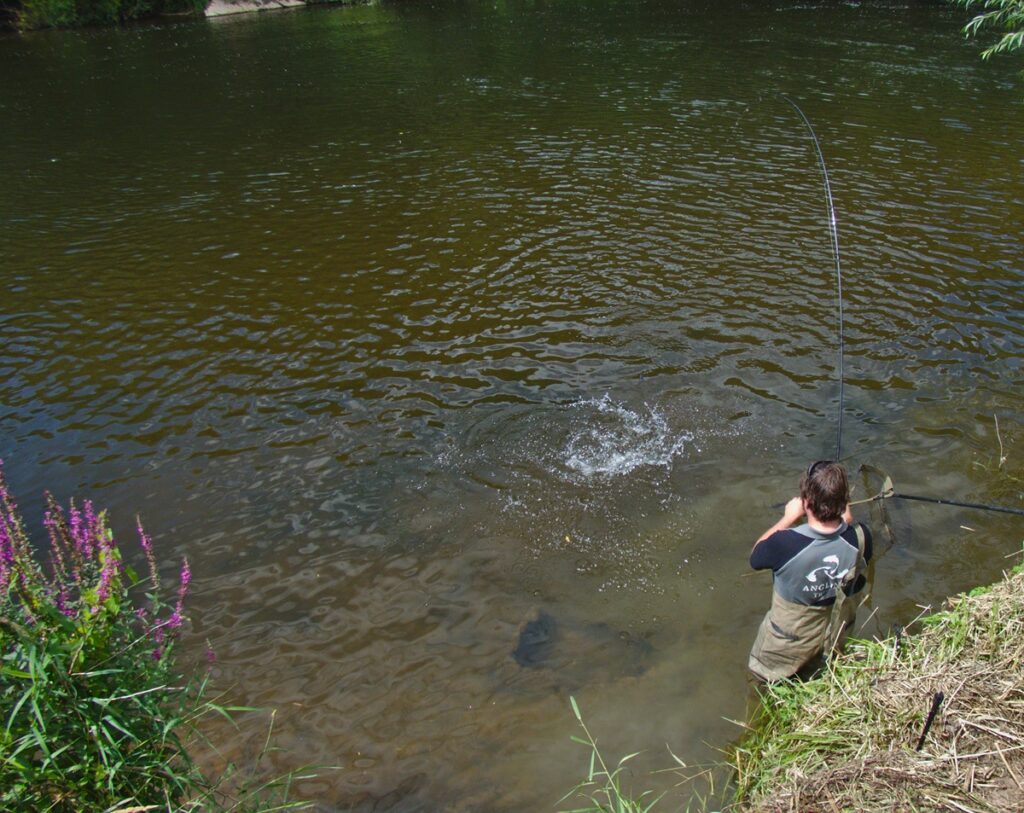
Wye Tributaries: The Wye has many important tributaries, many of which are significant fisheries in their own right, holding good numbers of coarse fish. These include: –
The Monnow: Famous as a trout water in its headwaters, the lower reaches of the river Monnow are much slower and suited to coarse fish. Fishing is made possible through several local angling clubs at a reasonable cost, including Monmouth and District Angling Society, Cwmbran Angling Association and Monnow Valley on the Fishing Passport. There is even a short free stretch just above the junction with the Wye, in the town of Monmouth. Chub, grayling, pike, roach and dace are all possible catches, with the chance of a stray barbel.
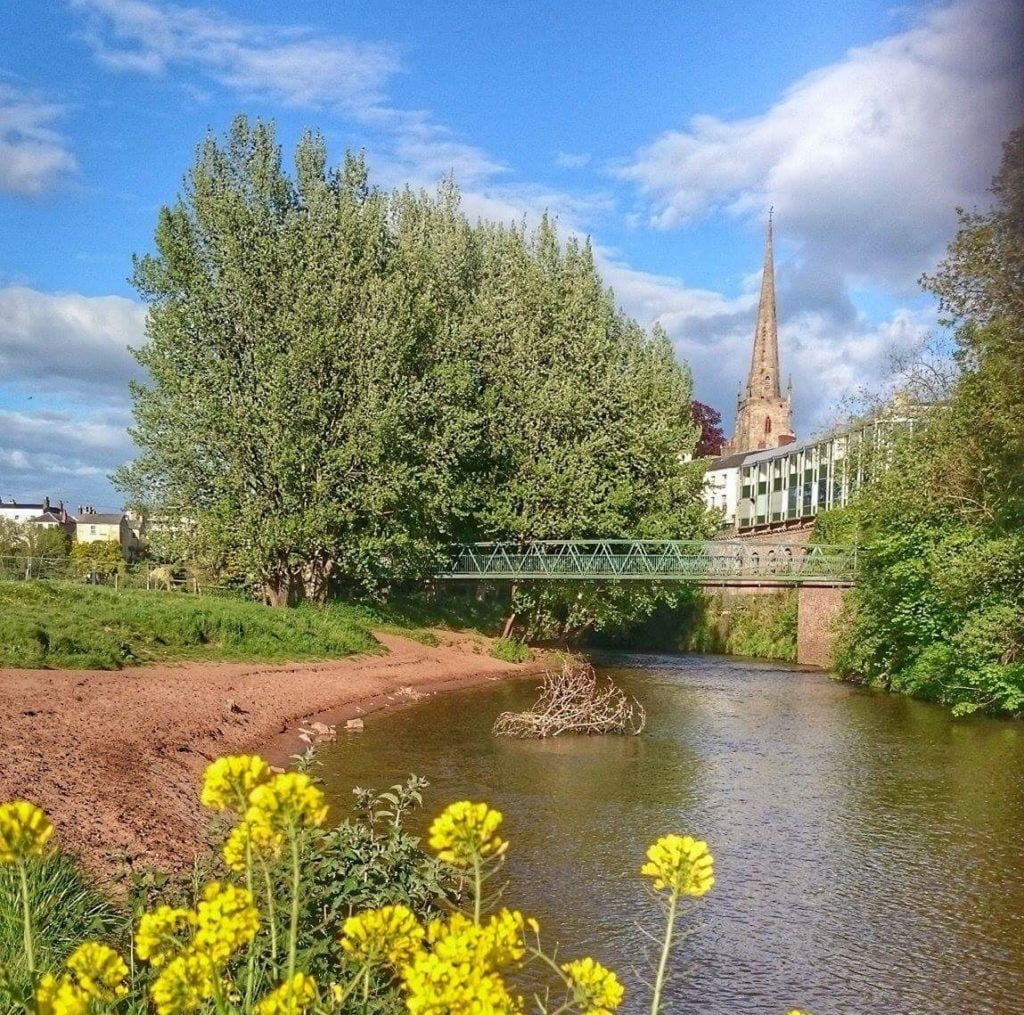
The Irfon: High up in the Wye catchment the Irfon is typically a fast flowing mountain river. However it is famous for large grayling, and it also produces chub, which are relatively few in number but usually of a good stamp. A few barbel have been reported near the Wye junction pool. Day ticket options are available with the Fishing Passport and with clubs such as Groe Park and Irfon.

The Trothy: Another Wye tributary, which enters the main river just below Monmouth. A lowland brook, coarse fish are present below Mitchel Troy, these include chub, roach, grayling and eels. Fishing is with Glamorgan Anglers Club and Monmouth and District Angling Society.
River Usk: Moving onto the Usk, which is a river famed for game fishing rather than coarse. However, the Usk does present some coarse fishing opportunities in its lower reaches, with chub and dace being present, from Abergavenny Town downstream. The best areas to try for chub are in the deeper pools from Chainbridge to the town of Usk, with fish of 6lb or more possible.
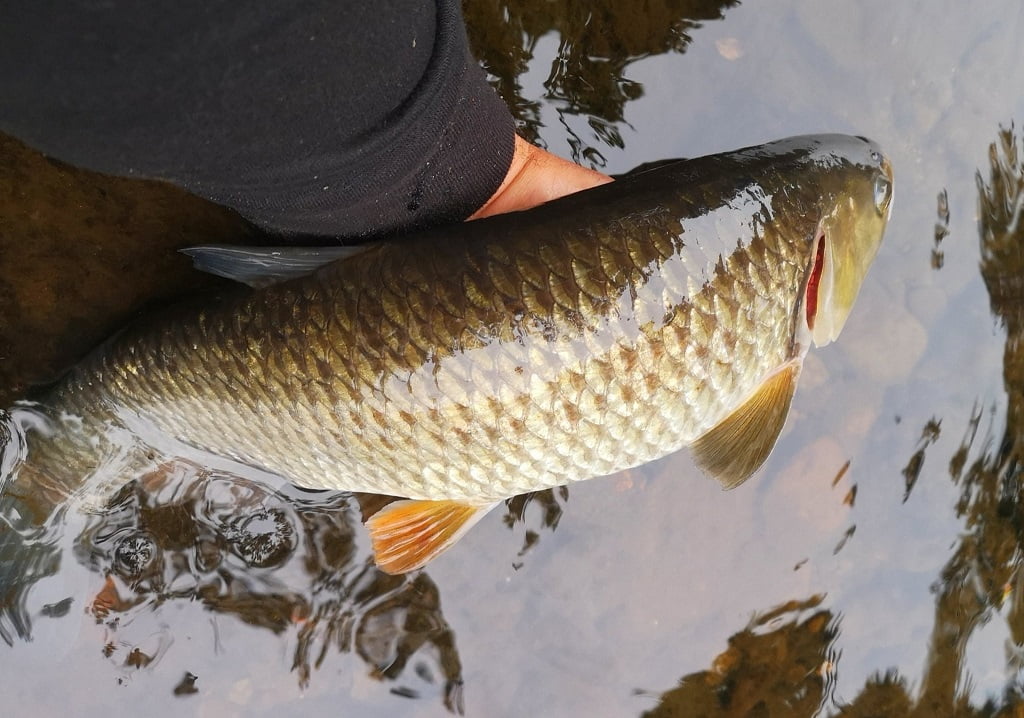
It is rumored that a few barbel may be present below Trostrey Weir on the lower river, although there is no hard evidence for this, such as photographs or angler reports. The best of the Usk coarse fishing is with the Merthyr Tydfil Angling Alliance.
There is also a small Usk tributary, the Olway brook, which is narrow, deep and slow flowing with inviting pools. This holds chub, dace and eels, with fishing controlled by Pontypool Angling Association.
River Rhymney: A post industrial river in South East Wales, the Rhymney is a gem of a river. In its lower sections it holds good chub, grayling and even the odd surprise barbel (below) Permits are with Caerphilly & District Angling Association, who offer memberships on the Rhymney and also for a stretch of the Wye below Monmouth.
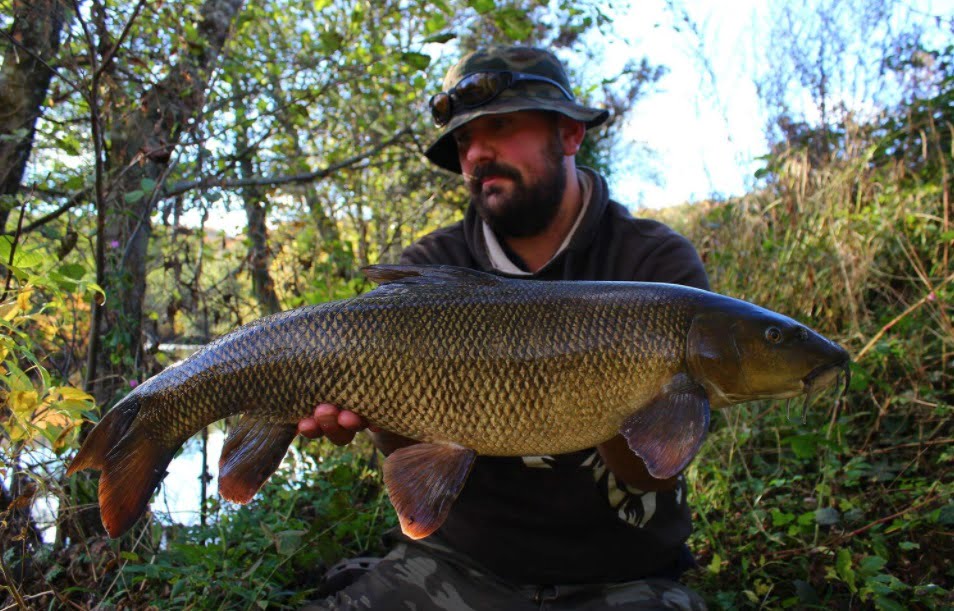
River Taff: Situated in Cardiff, The lower Taff from Radyr Weir to the Principality Stadium is an established coarse fishing river, holding Welsh record barbel (to 18lb), chub and grayling. Perch and pike are also present, below Blackweir, and the river has been re-stocked regularly with coarse fish fry including chub, barbel, roach and rudd. Fishing is with Glamorgan Angling Club. It should also be noted the Taff feeder canal is well worth fishing, this holds perch, barbel and chub.
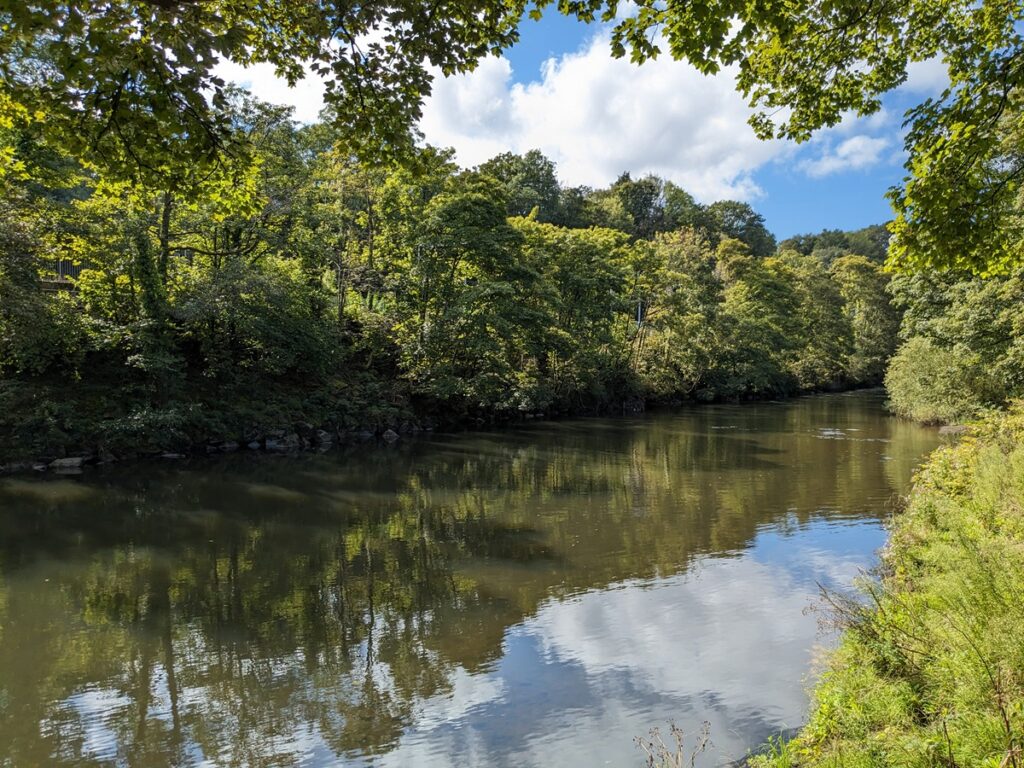
River Ely: Very underfished, this lowland river flows through farmland in the vale of Glamorgan. The Ely joins the Taff in Cardiff bay. It has a diverse population of coarse fish species, found from Talbot Green down to Cardiff Bay. These include grayling, chub, roach, pike and a few perch and barbel. The best of the Ely fishing around St Fagans is controlled by Glamorgan Angling Club.
River Severn: The upper Severn from Newtown downstream offers the best chance of good coarse fishing, with barbel, chub, dace and grayling present, along with a few pike. Although these species can occasionally be found as high up as Llanidloes. The upper Severn has angling club access, as well as some free stretches for Rod Licence holders.
The Welsh river Severn tributaries, the Banwy and Vyrnwy also offer coarse fishing, holding chub, grayling and barbel in their lower reaches. Fishing on these is mostly with Montgomeryshire Angling Association and Warrington Anglers Association.
River Dee: Situated in North East Wales, the lower river Dee below Llangollen offers excellent coarse fishing. World famous for winter grayling, other species include pike, perch in the deeper pools, chub, dace and even the odd barbel. Fishing is with clubs such as Corwen and District, Llangollen and Maelor Angling, Bangor on Dee Salmon Anglers and Newbridge Angling Association.
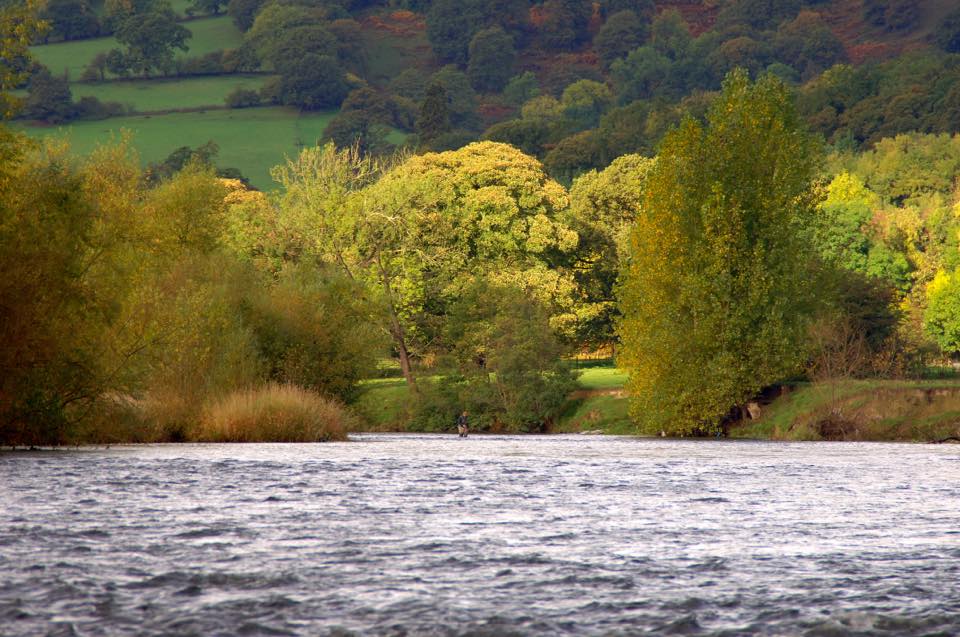
Key times in the coarse fishing season
Here’s a closer look at what each part of the season offers:
- Summer (June 16th to September):
- Best Time for: barbel and chub
- Description: Warm water temperatures make these fish more active and easier to catch. Early mornings and late evenings are particularly productive for both chub and barbel.
- Locations: The River Wye is renowned for its robust barbel populations and stunning summer scenery. Feeder fishing with halibut pellets is usually the best tactic. Evenings on the lower Taff could produce a monster barbel to large cube of meat.
- Autumn (October to December):
- Best Time for: grayling, pike, silver fish
- Description: As temperatures begin to drop, grayling become more predictable in their feeding patterns and switch on, taking trotted maggots where allowed, or worms. Pike also start to feed well, these fish, like grayling, are not tolerant of mishandling and low oxygen levels, so cooler water temperatures are much preferred when targeting them. Silver fish such as roach and rudd shoal up at this time of year, and when located can offer excellent sport for match anglers.
- Locations: The River Dee, Rhymney, Severn and Wye tributaries offer excellent autumn fishing opportunities, especially for grayling with many accessible fishing spots.
- Winter (January to March):
- Best Time for: Pike, chub, perch, grayling. Barbel during warm late winter spates.
- Description: While winter fishing can be challenging due to colder temperatures and shorter days, it rewards the dedicated angler with less competition and the chance to catch large pre-spawn pike. Perch follow shoaled up baitfish, so location is key. Chub can be active in mid-winter, often taken on maggots or bread flake. Grayling continue to offer good fishing, although they now shoal up, so location is crucial. Barbel may become active again near the end of the season, especially after a mild spell with rain.
- Locations: The lower stretches of the River Wye and the River Dee are ideal for winter coarse fishing, providing ample shelter for fish in deeper pools and slacks.
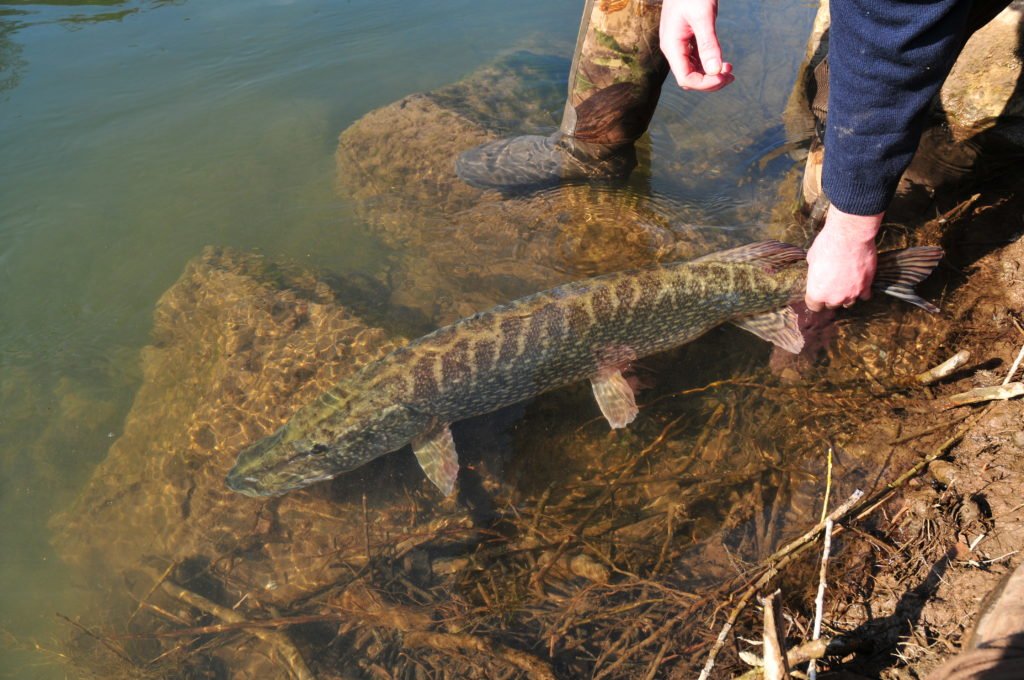
Remember, check the local bylaws for bait restrictions!
Some Welsh rivers have restrictions on bait types that can be used at certain times of the year. Therefore, it is important to check the NRW bylaws and the fishery rules on what baits may be used for coarse fish. The NRW bylaws can be found here.
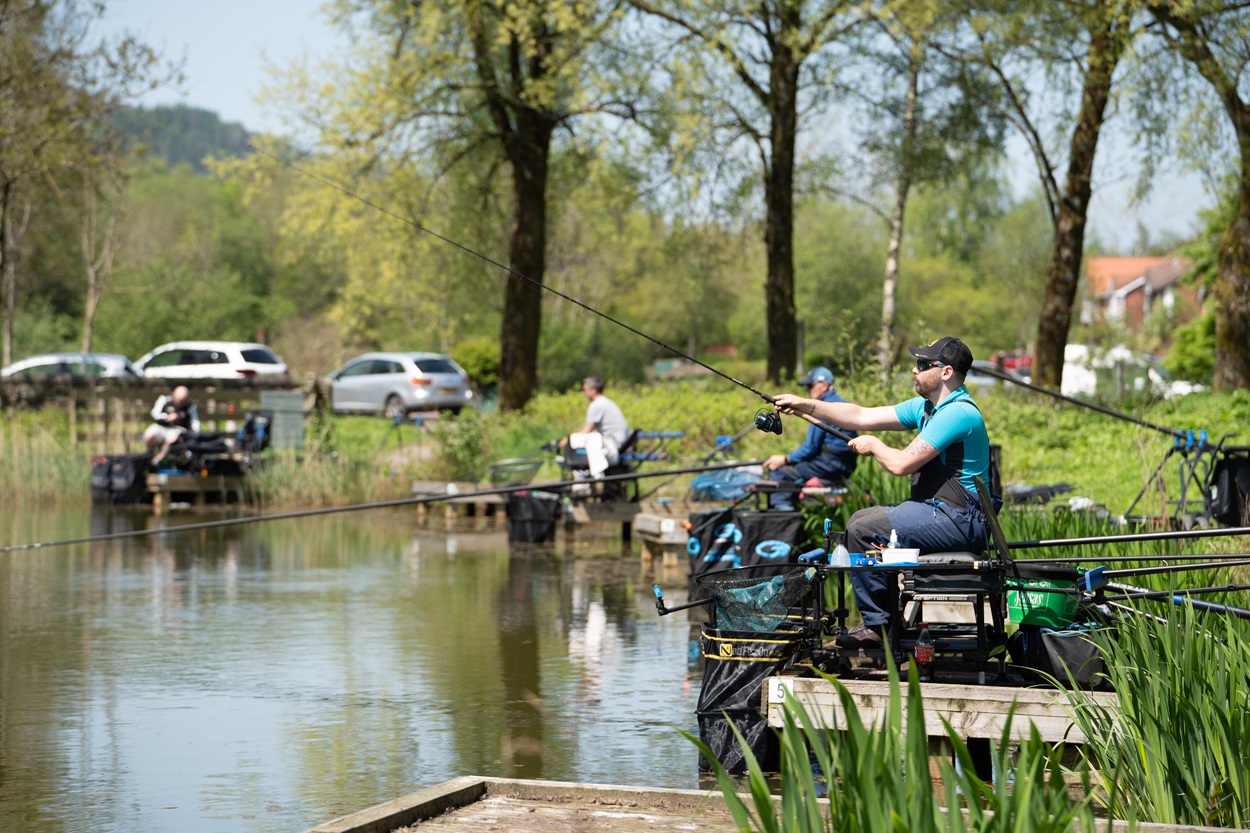
Five fishing resolutions for the New Year
Wales has so much to offer for 2026, with angling opportunities in abundance for seasoned fishers or newcomers to the…
Read More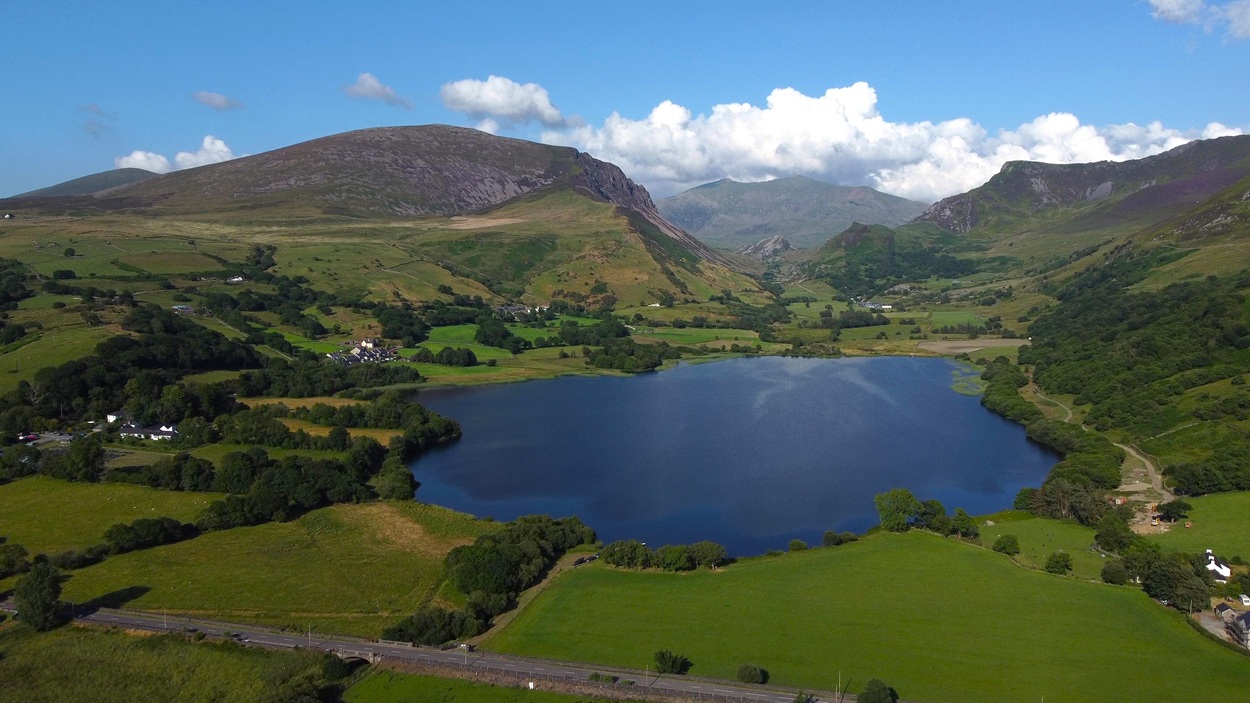
EPIC Welsh Fishing Lakes & Reservoirs from the Sky VIDEO
This cinematic drone montage showcases some of the most epic fishing lakes and reservoirs across Wales, from vast open waters…
Read More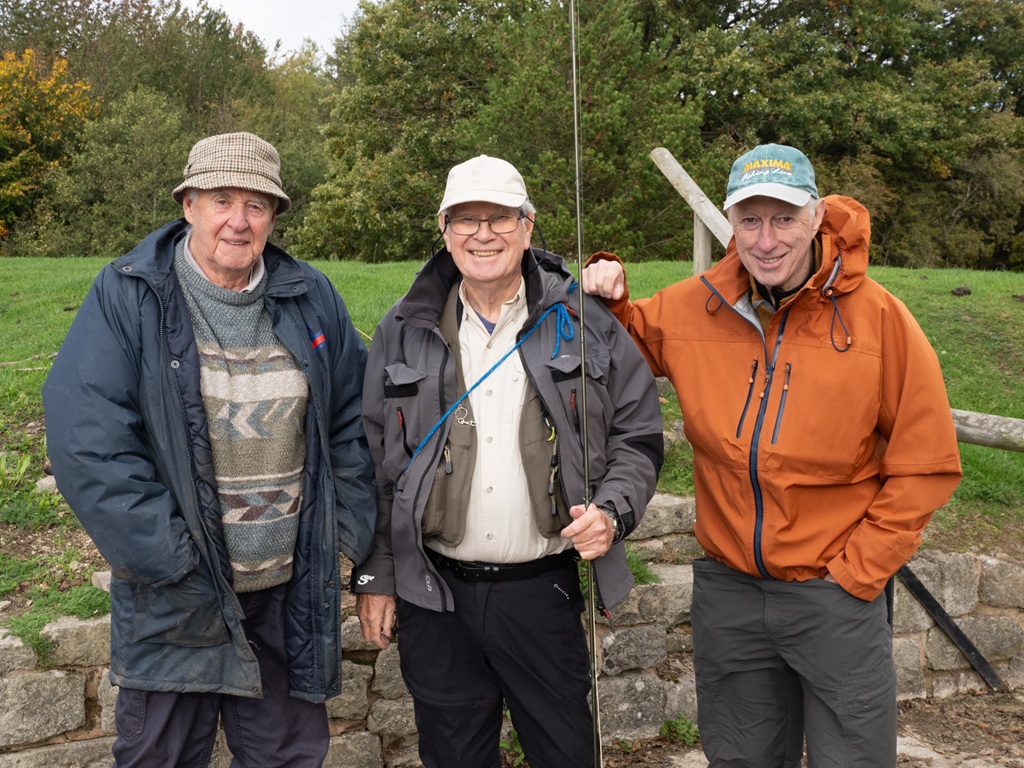
Take a Friend Fishing is Back! Take someone you know fishing for FREE this Christmas and New Year
Calling all Anglers – Take someone you know fishing for FREE between Saturday 20th December 2025 and Sunday 4th of…
Read More

